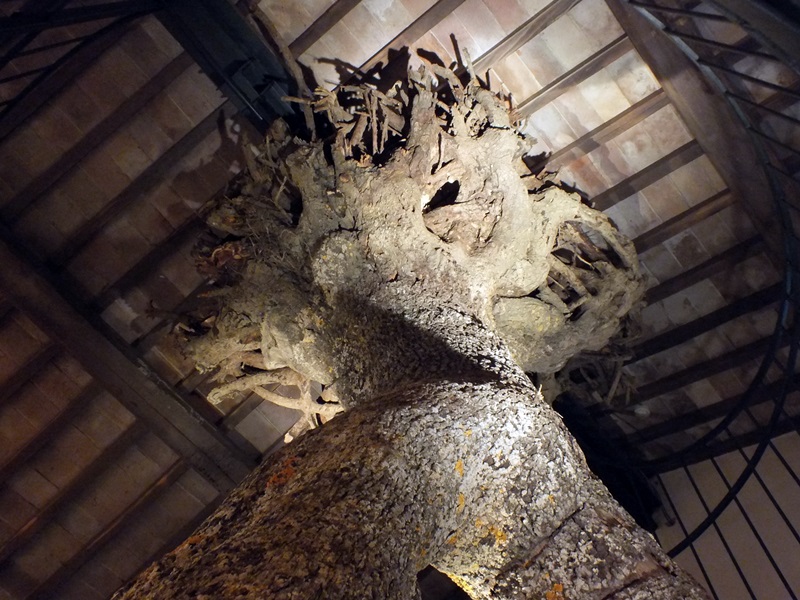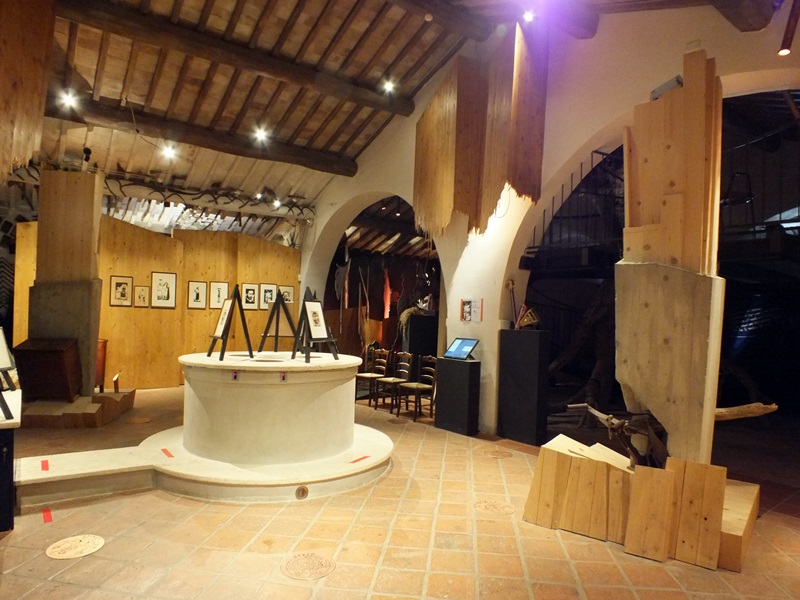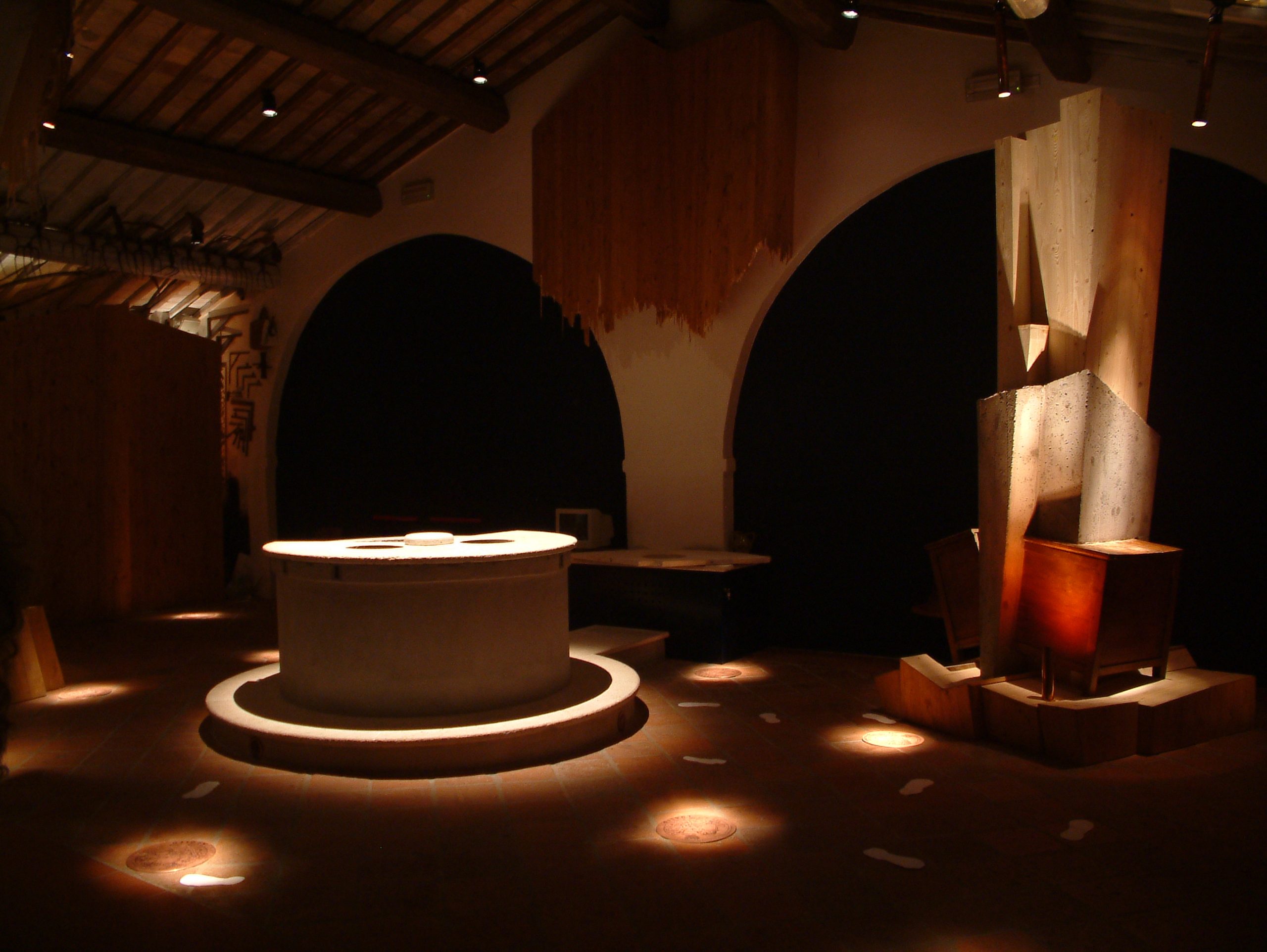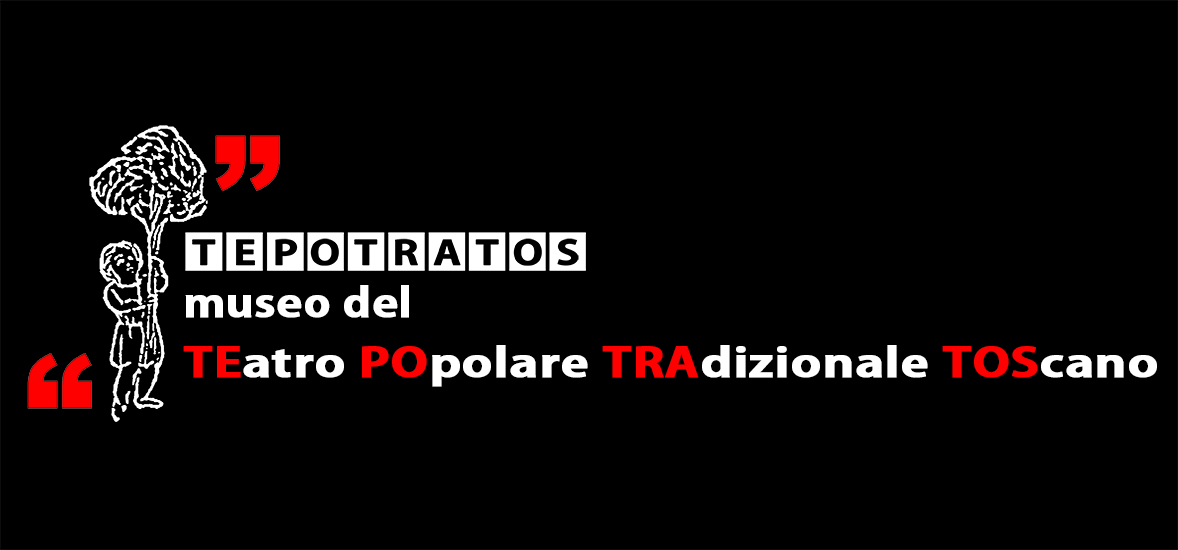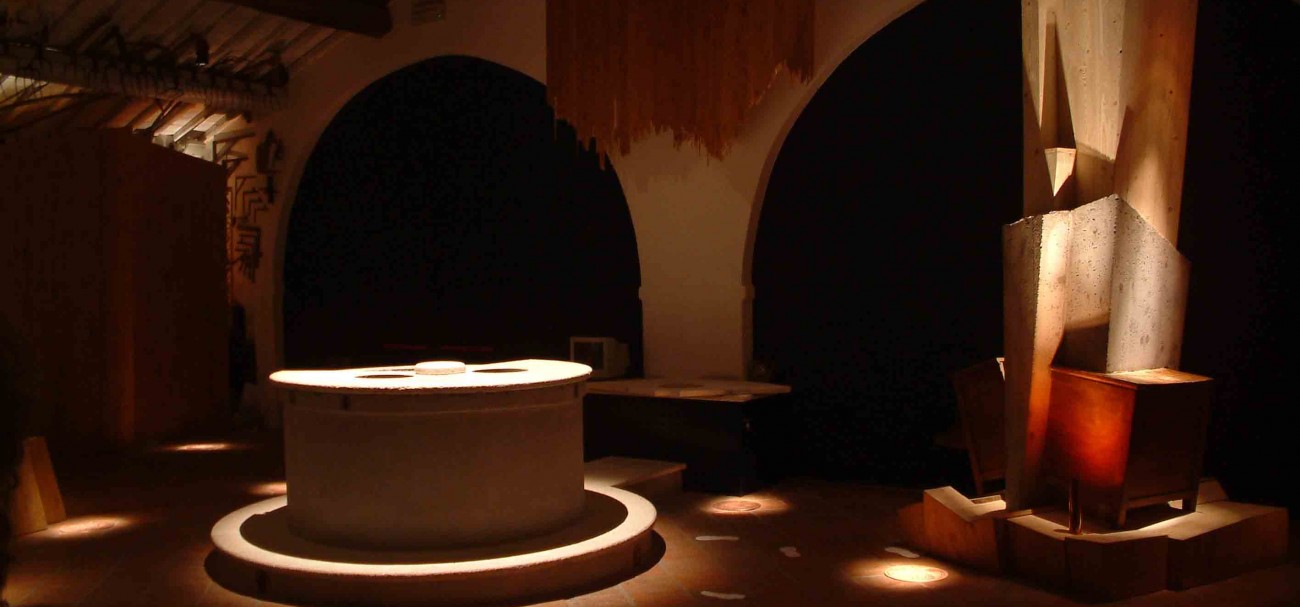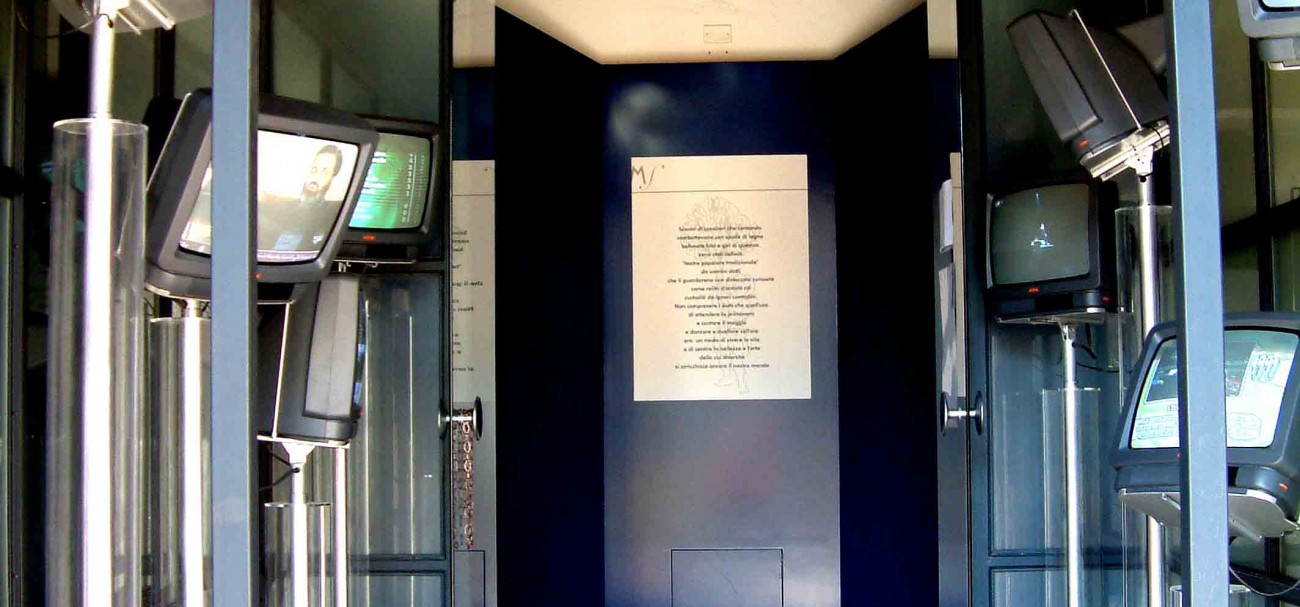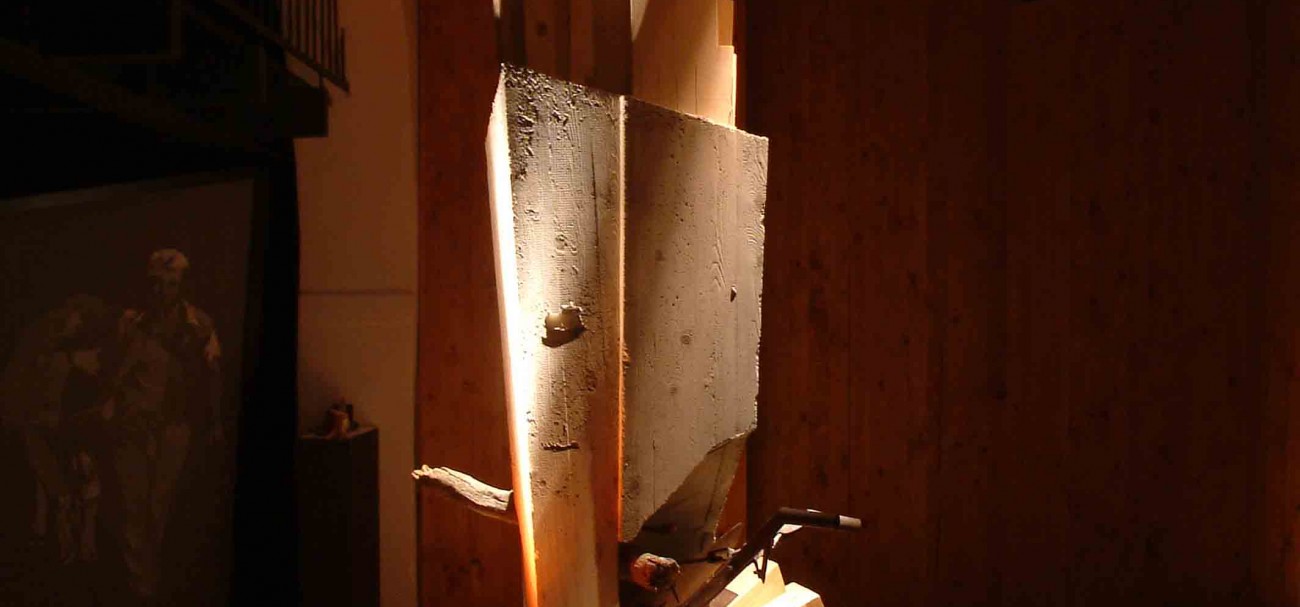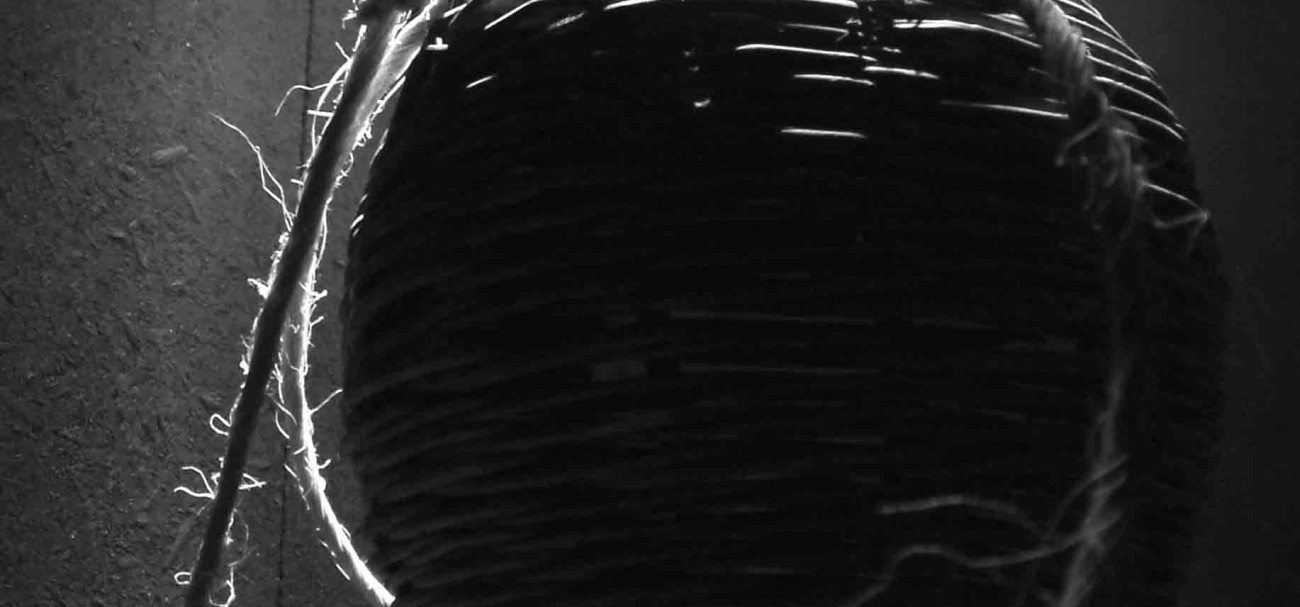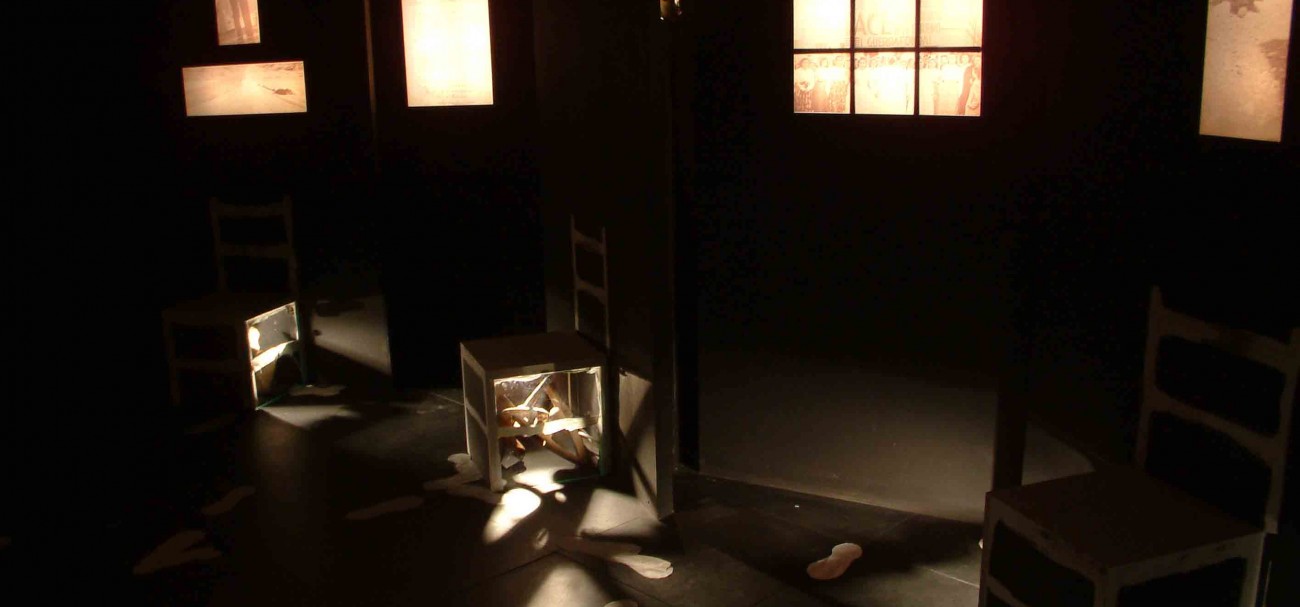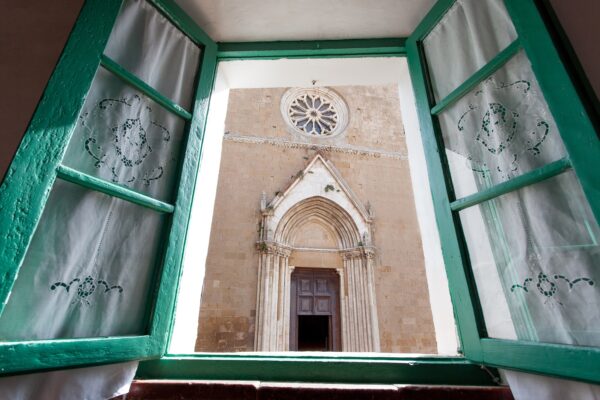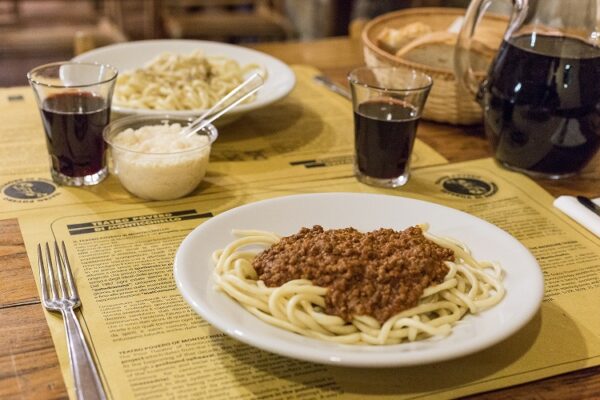Tepotratos is the name of our museum. A name which sounds fascinating and mysterious, like something out of ancient Greek. In fact it is a simple acronym which stands for TEatro POpolare TRAdizionale TOScano: that is, ‘Traditional Tuscan Popular Theatre’. But you will find that it still contains fascinating and mysterious things, in a rich display which is something like a stage set. Tepotratos is in fact not an ‘ordinary’ museum composed of exhibits, glass cases and inscriptions to read. On the contrary, it’s organised to stimulate the emotions, a journey for the visitor involving highly evocative sounds, voices and visions.
The museum belongs to the Teatro Povero; but it’s not a museum about the Teatro Povero.
We present here a succession of scenes and images from Tuscan traditional theatre. We have learned a lot from them; but most of all we want to pay homage to the civilisation of peasant sharecroppers—to their entertainments; to the pure simple world of their popular poetry; to their merry subversive tales of a ‘world upside down’, which often secretly expressed their wish for a society which would be more just, open and inclusive.
OPENING HOURS: Monday h. 9 am – 1 pm; from Tuesday to Sunday h. 9 am – 1 pm and 3 – 6 pm
Tepotratos is also a space which we use for temporary exhibitions, concerts, workshops and entertainments. A simple viewing of the museum’s permanent display costs nothing. To set up an interactive multi-media visit, you need to give at least a week’s notice to our office, by telephoning (+39) 0578 75 51 18, or emailing info@teatropovero.it.
You can also visit the museum’s website, www.tepotratos.it, for more information.
![]() The Barn (il Granaio): tourist information point, The Teatro Povero Shop.
The Barn (il Granaio): tourist information point, The Teatro Povero Shop.
1) St. Agatha’s Gate (13th century) – entrance to the village
2) Towers on the village ramparts
3) The Company’s ‘Little Theatre’ (former Misericordia Church, 17th century)
4) Former Commenda Palace
5) Former Town Hall
6) Church of Saints Leonard and Christopher (13th century)
7) Saint Martin’s square (where plays were staged until 2004)
8) Square of Commendation (theatre venue from 2005)
9) The Provost church of Saints Leonard and Christopher
10) Museum of Traditional Popular Tuscan Theatre (‘Te.Po.Tra.Tos’)
11) The castle keep (13th century)
12) The ‘sally port’ tower
13) Public laundry basins
14) Saint Rocco’s Church (13th century)
15) The Aldo Nisi Room
16) The Bronzone Tavern

